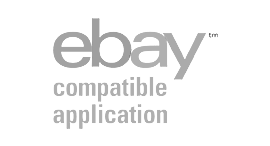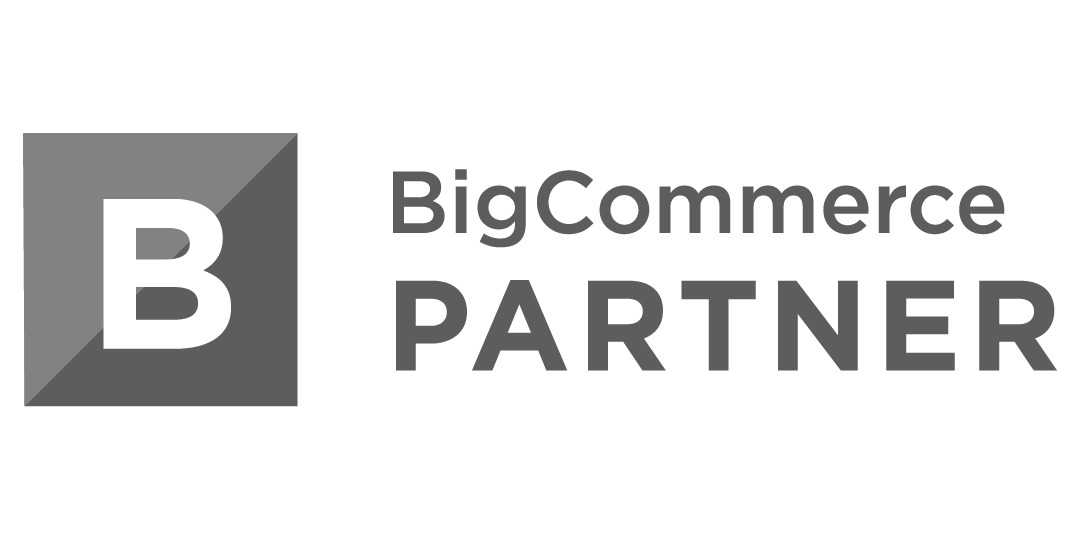(This post was last published on August 19th, 2019. We’ve updated it for accuracy and completeness.)
In 2019, Amazon reported that they delivered an estimated 3.5 billion packages globally. And, they expect to deliver 80% of their own packages by 2021.
In some ways, Amazon has been making more headlines for their renowned fulfillment network over the marketplace itself. They continue to innovate to ensure packages end up on doorsteps as quickly as possible.
As an Amazon seller, you might be asking yourself, “Should I be using FBA?”
This post explains how FBA works and what you need to consider before joining the program. Keep in mind, it’s not always the answer for everyone!
How Does FBA Work?
To keep it simple, FBA works like this: you sell it, then Amazon ships it.
The detailed process of Amazon’s renowned fulfillment process is:
- You send your items to Amazon to be stored in their fulfillment centers.
- After Amazon receives your inventory, you can monitor it through their tracking system.
- A customer orders your items from Amazon (or another eCommerce platform).
- Amazon picks and packs the sold items.
- Amazon ships your items by method chosen by the customer and provides them tracking information.
- They provide customer service and return management for items.
FBA is not just for orders placed on Amazon.com. You can also use it to fulfill orders from your own eCommerce site. For all your sales channels, Amazon stores your single composite inventory in its fulfillment centers and fulfills orders as they are placed.
As expected, Amazon charges different fees for use of their services. We’ll go into detail below about how to calculate your costs.
Despite these fees, why would a seller want to use FBA?
Benefits of Using Fulfillment by Amazon (FBA)
Fulfillment is one of the toughest challenges for online sellers. There’s a lot of moving parts to consider and inefficiencies can lead to high costs and problems like shipping to the wrong address.
Unfortunately, sellers don’t have much room to make mistakes either. 84% of consumers say that they won’t return to a brand after just one poor delivery experience.
That’s why many Amazon sellers turn to a program like FBA to handle fulfillment. You can meet customer expectations and lower your costs, among other key benefits.
Win the Amazon Buy Box
All sellers strive to win the Amazon Buy Box, which is the coveted selling spot guaranteed to win you more sales. It’s the first touchpoint a customer has with a product they’re looking for.
It’s well-known that no one but Amazon knows the exact algorithm used to choose who wins the buy box. However, it is known that free and fast shipping is a deciding factor. It’s suggested that Amazon prefers to recommend sellers using Amazon FBA because they know that on-time delivery is guaranteed.
Once you have the Amazon Buy Box, you don’t want to lose it to a stockout. Payability gets Amazon sellers paid the next-day, every day for their sales with their Instant Access program. They also offer Instant Advance where you can get 75-150% of your monthly Amazon sales upfront. Payability works well alongside or in the place of other financing options such as Amazon Lending. Plus, there are no credit checks and sellers can get approved in as little as 24 hours.
Earn Customer Trust
With FBA, you’ll get your products in front of more customers who are looking for free shipping. The “Fulfilled by Amazon Prime” symbol represents guaranteed delivery and its something that shoppers trust.
How often have you chosen a product on Amazon over another because it offered Prime Free One-Day delivery?
Lower Your Shipping Cost (Keep More Profit)
There’s a lot of factors that go into the price of shipping of an item. You have to consider the package’s DIM weight, size, destination, carrier agreements, fuel surcharges, and more. Even for small packages, these factors can add up.
And despite these costs, customers still expect fast and free shipping. This leads to sellers offering free shipping, even when they can’t afford it. If you’re not careful, shipping costs can quickly shrink your margins, meaning you make less money.
That’s why many sellers outsource to a program like FBA. The overall fees you pay them can be less expensive than trying to manage everything on your own. After all, you’re not a logistics expert.
Customer Service
FBA users also have access to Amazon’s acclaimed customer service. Your customers can contact customer support via phone or email both day and night. You’ll know they’re receiving top notch customer service, and you won’t have to spend hours providing it. Instead, you can focus on managing other parts of your operations.
Return Management
When using FBA, your customers can process returns through Amazon’s Online Returns Center too. This allows them to conveniently return items when needed. You won’t have to worry about the difficulty of reverse logistics anymore. Returns are often an overwhelming task for online sellers, but important to an overall successful online experience.
Studies show that of the 60% of online shoppers that make at least one return or exchange per year, 95% will make another purchase if the return experience is positive.
Be aware that you are charged for a returns processing fee for this service.
Using FBA Beyond Amazon
FBA isn’t just for items sold on Amazon either. You can also use FBA for your own eCommerce site. Your customers can enjoy flexible shipping options like one-day, two-day, and standard delivery times.
Handling fulfillment across different channels can be difficult and expensive. Letting Amazon handle it for you ensures you’re giving customers the best experience possible. Whether you’re already selling on Amazon or not, you can keep your ordering and shipping process consistent across your channels.
Overall Customer Experience
Overall, FBA can significantly improve your customer experience. You’ll win them over by giving them multiple shipping options, fast delivery as promised, an easy return process, and trustworthy customer service from Amazon.
Seeing the “Fulfillment by Amazon Prime” logo next to your items can go a long way with customers.
Understanding the Costs of Using Fulfillment by Amazon (FBA)
While there are benefits to using FBA, you must consider the costs of this service to determine if it’s right for your business. Amazon charges its fees on a per-unit basis.
How to Calculate Your FBA Fees for Amazon.com Orders
To determine your costs, you take these steps:
- Select whether your product is apparel or non-apparel
- Determine its product size tier (standard or oversize)
- Calculate its shipping weight
Here’s how you would calculate the fees for a book (based on 2020 FBA fulfillment fees):
First, determine the item weight and dimension. In this case, let’s use:
- Item weight: 10 oz
- Dimensions: 5.5 x 0.5 x 7.25
Now, we can use Amazon’s chart for FBA fulfillment fees to calculate an estimate for the fees:
- Book is a non-apparel item
- It’s product size tier is “small standard”
- Shipping weight is 10 oz or less
This means that the fulfillment fee is $2.50. For comparison, a large standard size item over 3 lbs would cost $5.80.
Then, you add your monthly inventory storage fees. Standard-size inventory storage fees are $0.75 per cubic foot and increase to $2.40 per cubic foot from October to December.
How to Calculate Your FBA Fees Multi-channel Orders
As mentioned, Amazon FBA can be used to ship products from your own website or sales channels. However, costs will be different than products sold on Amazon.com.
Using the same book example from above, your fulfillment fee would be $5.69 (versus $2.50) to offer expedited, 2-day free shipping. It would cost $12.80 to offer priority next-day shipping.
Additional FBA Costs to Consider
Fulfillment fees and storage costs are just your two main costs. There are additional fees for the following scenarios:
- Labeling — Amazon applies barcode labels on a per-item fee
- Prep Service — Amazon preps your inventory for storage on a per-item fee
- Repackaging — Amazon repackages your returned items to be resold
- Long-term inventory storage — When products are stored in an Amazon warehouse longer than 365 days
- Unplanned services — If your inventory arrives at warehouse without proper preparation or labeling
- Returns processing — Whenever a customer returns the product
- Removal order — If you ask Amazon to return or dispose of your inventory in a their fulfillment center
- Oversize items — Have special handling fees per shipment
As you can see, FBA costs can vary depending on your business and the type of items you sell. You will face additional fees if you have very large items, inventory with long-shelf lives, or want to use FBA just during the holiday season.
Resources for Estimating your Amazon FBA Fees
Because of the complexity in calculating and understanding your costs, Amazon does offer tools and resources to help you preview your fees as best as possible. Here’s the top pages to view:
- Fulfillment Fees for FBA Orders
- Fulfillment Fees for Multi-channel Orders
- Monthly Inventory Storage Fees
- Full list of Fees
You can also turn to different calculators like Amazon’s own Fulfillment by Amazon Revenue Calculator (requires a professional seller account to use). This tool is great if you only have a few products to compare that you already sell on Amazon. It’s also possible to look for free FBA bulk calculators to check prices for lots of items at once.
Keep in mind that Amazon changes their fees almost yearly. You want to make sure that you’re always up to date and evaluate the costs. The latest 2020 Fulfillment by Amazon Fee changes are effective February 18, 2020.
Disadvantages of Using Fulfillment by Amazon
Even though Amazon is one of the most advanced fulfillment processes in the world, their FBA service still has a few, sometimes unrealized, disadvantages for sellers. Make sure you consider these difficulties before signing up for the service.
Commingling Merchandise
Amazon commingling combines qualifying products from different sellers for processing and shipment by Amazon. As a seller, it saves you time and effort you’d otherwise spend applying FBA approved labels to each of your items or paying Amazon to do it for you. It also allows Amazon to ship products from whichever of their nationwide facilities can get the item to the buyer the fastest, which is how they’re so efficient.
Instead of providing labels, you just use an item’s barcode that pools your products with other sellers based on the product ID. Amazon can then strategically store and ship items of the same product ID by the location that ensures the fastest-shipping time.
For example, a buyer in Ohio selects a product from a seller in Colorado. If Amazon’s system finds an identical product offered by a seller in Indiana, whose product is in a closer fulfillment center, they’ll ship the Indiana seller’s item to the buyer. The Colorado seller still gets the sale of course.
Since all the items are the same, what’s the potential problem?
Product quality control consequently becomes very difficult for sellers. Scenarios have been cited where sellers are forced to close shops, receive negative reviews, or even face legal actions when counterfeited or damaged items are received by customers in lieu of the genuine item the seller sent Amazon.
It wasn’t the seller’s fault, but they still faced the harsh consequences. To learn more about the process of commingling, read about the pros and cons of commingling for Amazon merchants.
Be aware: By default, your seller account is set to use the manufacturer barcode to track your inventory. So, your items will be commingled with items of the same products from other sellers who also use manufacturer barcodes. You must manually change your Amazon barcode preference if you don’t want to commingle your products.
Sales Tax Compliance
Another voiced issue of FBA is sales tax compliance. As a seller, you’re required to collect sales tax in states where you have sales tax nexus, which is when your business is tied to a state like storing inventory for sale. This means sellers are on the hook for sales tax in states where Amazon fulfillment centers store their inventory.
Before, Amazon wasn’t always transparent with sellers of which warehouses their inventory was located. However, you can now find this information in your Amazon Fulfillment Reports in your seller account. It’s under Reports > Fulfillment > Inventory Event Detail.
In the last few years, Amazon also now collects sales tax on the sellers’ behalf in most states with an Amazon fulfillment center.
However, sellers still need to make sure they’re sales tax compliant in states that do not require Amazon to collect sales tax on a sellers’ behalf. You can check each state here and what it means for your Amazon Business.
Long-Term Storage Fees and Managing Inventory
As FBA grows, space within fulfillment centers becomes more valuable. It’s no surprise then that Amazon charges you more if your inventory sits longer than 365 days on their shelves or during peak seasons like holidays.
If your items have long-shelf lives or if you usually have stale inventory, you’re paying a pretty penny for rent to just store items, especially if it’s not going to sell. It’s also hard to monitor when this inventory becomes too much of a burden on your bottom line. If you have thousands of items, it’s difficult to keep track of how much inventory you have and what you need to cut back on.
Preparing Items for Shipment
While Amazon takes care of the entire fulfillment process for you, they only do so once they have the inventory in their hands. Sellers can struggle with preparing and shipping their items to Amazon’s fulfillment centers.
You must forecast the items you think you’re going to sell and then must properly label and ship them to Amazon. It takes more time, planning, and costs to ship your products to the right warehouses. It’s even more difficult if you’re sending out thousands of products.
Alternatives to Amazon FBA
If you’re not sold on using FBA, there are alternatives worth taking the time to compare.
For an in-depth analysis of FBA alternatives, check out our article 3rd Party Fulfillment Services: Fulfillment by Amazon (FBA) Alternatives.
You can also consider solutions that automate different parts of your fulfillment process. By integrating your eCommerce, marketplaces, ERP, and 3PL providers like FBA, you can automate processes like order management, drop shipping, and returns management.
Is FBA Worth the Cost for Your Business?
Just because Fulfillment by Amazon is used by a lot of third-party sellers, it doesn’t mean it’s right for your business.
You must evaluate its main benefits such as 2-day shipping and easy returns versus its service fees. Sellers also must factor in some cited issues with commingling and sales tax compliance.
For some, it might be a tough choice whether to use FBA. If you do decide that FBA is right for you, learn more about how to integrate FBA more tightly with your other retail systems like your ERP, POS, and web stores.






